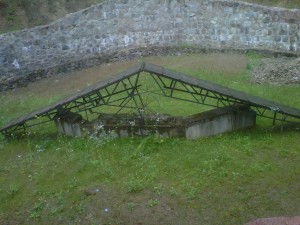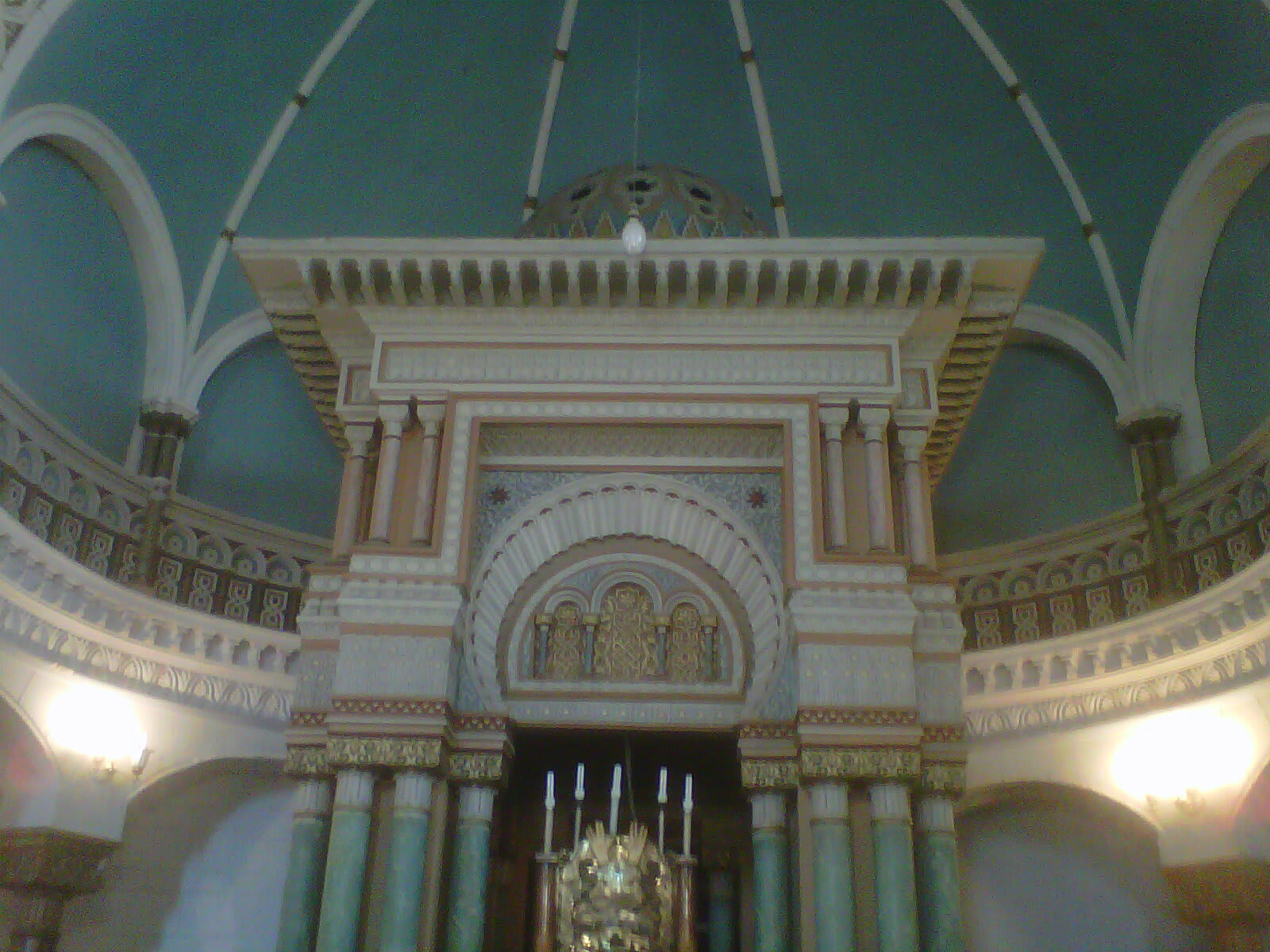The Churban (destruction) continued…Rabbi Soloveitchik emphasized that Tisha B’Av is a day devoted not only to the destruction of the two Temples, but also to our “historic recollection of all the tragedies that have befallen our people over the centuries….Our history has been one long experience of Eikha.”
Traditionally, Tisha B’Av, the 9th day in the month of Av, commemorates the destruction of the 1st and 2nd Temples, both of which were destroyed on the 9th day of Av. However, as Rabbi Soloveitchik notes, our history has been dotted with tragedy and destruction, each deserving of remembrance and commemoration. While many of these tragedies occurred on the 9th of Av, such as the expulsion from Spain in 1492 and from England in 1290, most occupy other days of the year. All cry out for memory and remembrance.
Not long ago, Israel Hayom reported that veteran journalist, Benny Liss released a movie he filmed of an underground cave on the Temple Mount. In that cave, he had discovered a mass grave which he believes holds the remains of Jews massacred by the Romans when they destroyed the Temple in 70 C.E. – a powerful physical reminder of the terrible sacrifice Jews made.
That such terrible tragedy should take place at the site of such soaring grace and sacredness is particularly galling and worthy of our remembrance. Sadly, Jerusalem and the Temple Mount have not been our only sacred sites that have witnessed moments of utter destruction and devastation during the long march of Jewish history.

Recently, my wife Clary and I traveled to Lithuania to experience what remains of one of Judaism’s most magnificent centers of learning. My journey – pilgrimage if you will – organized by Zvi Lapian of Israel, led by the eminent historian and distinguished scholar Dr. Shnayer Leiman, took me to what was once the world’s center of Torah learning. Magnificent yeshivot (Talmudic academies), emanating from the unparalleled genius and accomplishment of the Vilna Gaon. Following the Gaon, Rav Chaim of Volozhin developed and perpetuated in the great yeshivas of Telz, Ponoviez, Radun, Mir, Kletzk, Grodno, Slabodka, and Baranovich.
Had it not been for these pre-Holocaust citadels of Jewish learning in Lithuania, today’s Torah learning, methodology and yeshiva approach would simply not exist. Indeed, but for the brilliance of Lithuanian Jewry, modern observant Judaism would look very different.
Vilna’s history was as noble as its downfall was horrific. Dubbed the “Jerusalem of Lithuania,” Vilna boasted a pre-Holocaust Jewish population of nearly a quarter of a million. More than 110 shuls – both stately and modest – served the prayer and study needs of this wonderful community.

And now? There is but a single shul remaining, the Choral Synagogue. In a place where once hundreds of thousands raised their souls to G-d, it struggles to gather a minyan (quorum of 10 men for prayer) of paid “worshippers” even on Shabbat. The ghost of a magnificent community remains, with fewer than 3,000 Jews living in Lithuania.
The cold math is enough to make anyone shudder in grief. Of a quarter of a million souls, 220,000 were murdered. Wherever one travels in Lithuania, he is forever reminded of the death and destruction, of the wickedness of man that brought down one of history’s great Jewish communities.
During my visit, I found myself gazing upon the beautiful forests of Lithuania. Such natural beauty! How the air was perfumed with the scent of spruce, fir, pine and alder trees! How strong the trees rose into the sky!

In the face of such natural splendor I could not help but recall that these same trees stood silent witness to the blood spilled and horrors perpetrated in their midst. A mere ten miles from Vilna, the Panerari forest rises like an emerald from the fertile earth. A place of growing things. Of soaring trees and fragrant blossoms. It is also a place where 70,000 Jews were shot as they stood at eleven oil storage pits previously dug by the Russians.
Of this hateful loss of human life, a small group of Jews was “spared” so that they could burn the bodies. The murderers wanted to ensure that no “evidence” of the massacre would remain. As if the crying out of murdered souls would not be evidence enough! Panerari, magnificent forest, its name forever cursed as the site of the first phase of the mass extermination of the Jews. Ten miles from Vilna. The Jerusalem of Lithuania. Tens of thousands of Jews hauled away and murdered.
In Kovno, 70 miles from Vilna, the Ninth Fort rises on a hill just outside the city. This ancient fortress was used by the Nazis and their local collaborators as a prison with cells and torture chambers. On October 28, 1941 9,000 Jews were brutally murdered here. On May 18, 1944, 900 French Jews were slaughtered.
As we passed, I could fairly hear their cries for mercy in my ears, calling out from the forbidding, cold earth.
I heard those voices as I led mincha, davening at the one remaining Kovno Shul. I sensed those souls hovering nearby, crying out, “Amen,” begging never to be forgotten.
In town after town, I was awed by the evidence of Torah knowledge, scholarship, genius, sophistication and spirituality that emanated from there. At the same time, overwhelming sadness at the horrors and destruction that befell these communities and their Jews. In most of these towns where Jews were mass exterminated, a lone monument stands shomer in the chilly air, recalling in grim objectivity the 1,742 Jews murdered here, the 2,734 Jews slaughtered there and the 3,265 wiped out there, all taken from this world by the cruelty of the Nazis into mass graves. Mere numbers on the monuments. Living, breathing souls in our hearts and memories, stolen from their small, modest, idyllic homes and taken to their horrific deaths…in most cases together with their rabbonim (rabbis), mentors, geonim (leaders) and tzaddikim (righteous men) as exemplified by Rav Avrohom Komai, the last rav of the Mir or Rav Elchanan Wasserman of Baranovich.
It was all too much to bear. How could such a thing occur? How? One word comes to mind, Eikha. Tragedy.
Can anything ennobling, and enduring be taken from all the horror that has happened? From the hurt that has been endured? Can something of worth be lifted from the flames?
Shavel had been the third most populous city in Lithuania, located near a major road and railway juncture. It had been famous for being home to the largest leather factor in the Russian Empire, owned by Chaim Freinkl. Shavel, home to more than 14,000 Jews, prior to the liquidation of its ghetto. The community was decimated during the Shoah. Only 500 survived.
Only a handful remains there today.
In today’s Shavel there is a Kehila House where Jewish communal activity takes place. There we met a man, Mr. Boris Steinas, whose Star of David decorated business card states that he is “Chairman” of “Jewish Community of Siauliai District” in “Lietuva/Lithuania.”
He told of returning after the war, along with 700 others. By 1991, when Lithuania gained its independence from the Soviet Union, there were 400 Jews. Today, they are a “kehila (group) of 200 Jews – a kleine kehila mit groise tzores – a small community with big problems.”
There are 20 children under the age of 18, but only three are “really Jewish,” born to two Jewish parents. The rest, he noted ruefully, are born of intermarriages.
The community is dominated by the elderly, the sickly, the invalid. But, he said, “we try that the community should not be destroyed. It’s not easy; we have no means of support, we don’t have too much help. We celebrate all the yomim tovim (holidays)…”
In the end, his message was simple and powerful:
We invest many koiches (much of our energy) to perpetuate the sacred areas vie m’hot geharget and geshosen yidden – where Jews were shot and murdered without any trace of memory or remembrance. I consider this our sacred duty.”
M’zol nisht fargessen – so it not be forgotten…..
It is difficult to see in these dwindling numbers sparks of a once-thriving, glorious Jewish community. Shavel’s gifts to the Jewish world remain in its tradition of Torah learning and in the great teachers that it gave to us. Might that too be coming to an end?
These questions weighed on me as I came toward the end of our time in Lithuania. And then, as if to emphasize the seriousness and urgency of the concern, Rav Yosef Shalom Elyashiv, rabban shel Yisroel (rabbi of the Jewish Nation), passed away on the final day of my visit.
Rav Elyashiv had been born in Shavel in 1910. He died on July 18th in Jerusalem’s Shaare Zedek Medical Center at the age of 102. With his passing, we may have seen the last of the undisputed leaders of the non-hasidic “Lithuanian” haredi community.
Rav Elyashiv was born in 1910 in Siauliai (Shavel in Yiddish), Lithuania, the only child of Rav Avraham Orener and Chaya Musha, daughter of the mekubal Harav Shlomo Elyashiv, the Leshem. The family immigrated to Mandatory Palestine in 1922.
Rav Elyashiv married his wife of 65 years, Sheina Chaya, in 1929, on the recommendation of Rabbi Avraham Yitzhak HaCohen Kook, the first chief rabbi of Palestine. The couple had 12 children.
He served for many years as a rabbinical judge in the Chief Rabbinate and on the Supreme Rabbinical Court, during which time his stature as one of the most knowledgeable authorities in Halacha (Jewish law), grew rapidly.
Recognized for his outstanding scholarship in Talmudic law, the published works of Elyashiv are largely compilations of his countless rulings on Jewish law and responsa to questions posed to him over his many years as the leading halachic authority.
And now, though the remnants of the Lithuanian haredi community have grown in Israel, where to?
As the Torah greats who were born into the magnificent Jewish communities of Europe pass into eternity, what of those of us who remain? How do we reckon the loss of these individuals and the worlds that passed away before them?
Shavel, the glorious community that gave birth to the Gadol Ha’dor (leading rabbi of the generation), which once flourished within the larger Lithuanian Jewish world, is no longer a physical reality. But as the dream of Jerusalem beckoned us for two centuries after the destruction of the Second Temple, “Next Year in Jerusalem”, let us determine to keep the memory of Shavel and the many other destroyed communities alive in our hearts. Let us not allow them to be forgotten.
Let us promise ourselves that “every year in Shavel.”
Rabbi Dr. Eliyahu Safran serves as OU Kosher’s vice president of communications and marketing.
The words of this author reflect his/her own opinions and do not necessarily represent the official position of the Orthodox Union.
